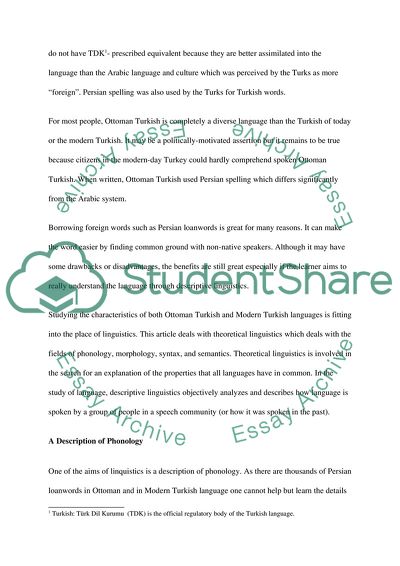Cite this document
(“Persian Loanwords in Ottoman and Modern Turkish Language Research Paper”, n.d.)
Persian Loanwords in Ottoman and Modern Turkish Language Research Paper. Retrieved from https://studentshare.org/humanitarian/1731631-persian-loanwords-in-ottoman-and-modern-turkish-language
Persian Loanwords in Ottoman and Modern Turkish Language Research Paper. Retrieved from https://studentshare.org/humanitarian/1731631-persian-loanwords-in-ottoman-and-modern-turkish-language
(Persian Loanwords in Ottoman and Modern Turkish Language Research Paper)
Persian Loanwords in Ottoman and Modern Turkish Language Research Paper. https://studentshare.org/humanitarian/1731631-persian-loanwords-in-ottoman-and-modern-turkish-language.
Persian Loanwords in Ottoman and Modern Turkish Language Research Paper. https://studentshare.org/humanitarian/1731631-persian-loanwords-in-ottoman-and-modern-turkish-language.
“Persian Loanwords in Ottoman and Modern Turkish Language Research Paper”, n.d. https://studentshare.org/humanitarian/1731631-persian-loanwords-in-ottoman-and-modern-turkish-language.


